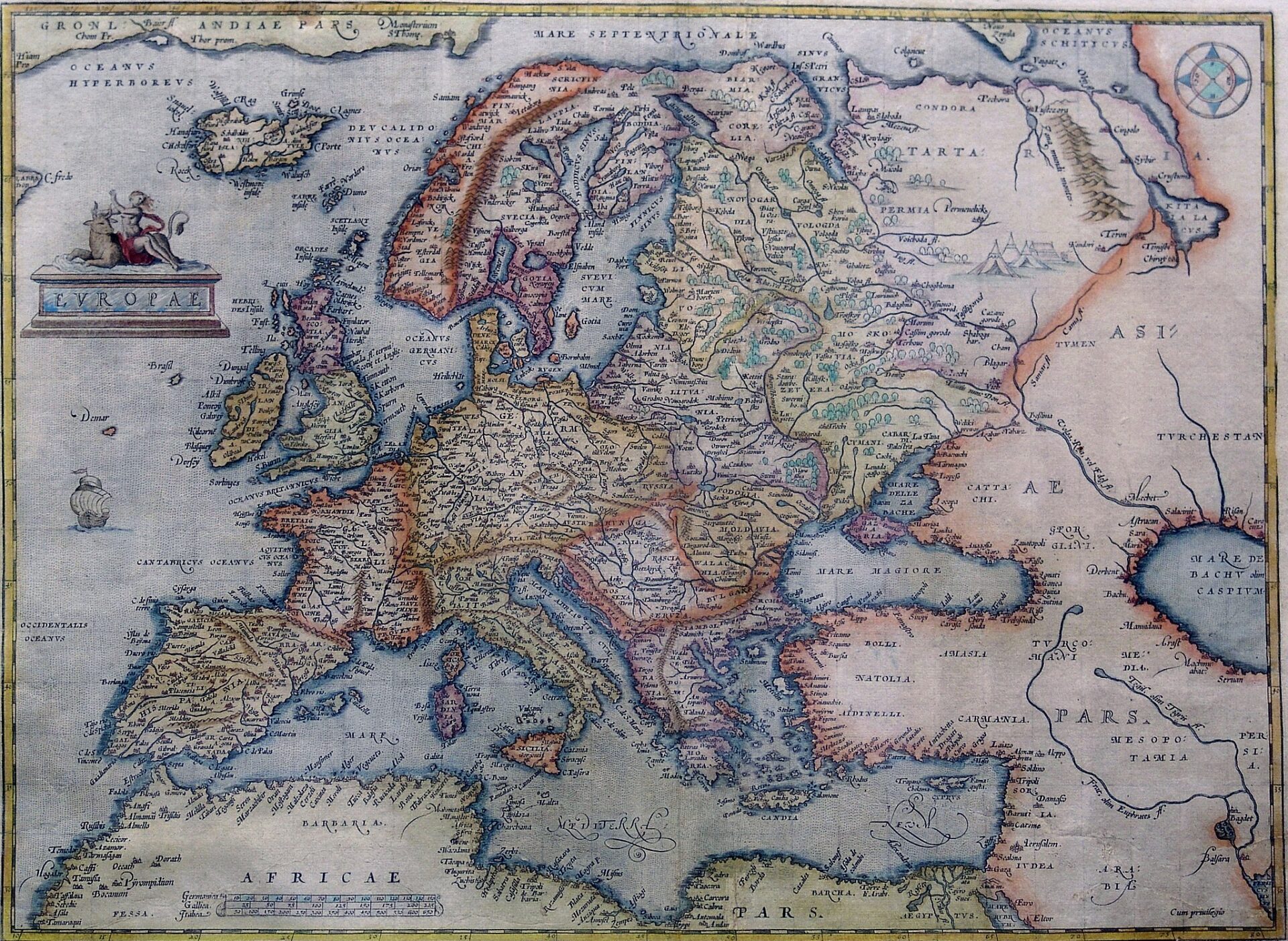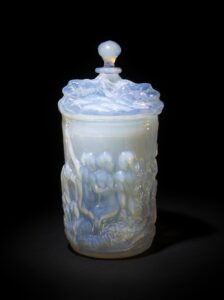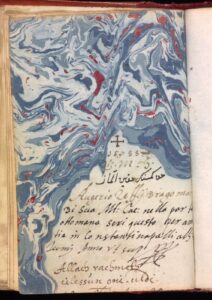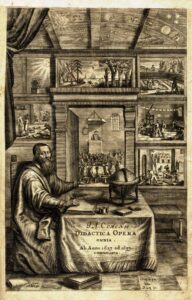
Held in association with the Cambridge New Habsburg Studies Network at Gonville and Caius College, University of Cambridge, on 13 May 2022. We were delighted to welcome around fifty participants in person and online throughout the day, with speakers from the Czech Republic and Poland to the US.
This workshop was convened with the aim of setting out the state of research on Central and Eastern European connections in the early modern period, and to position the study of Central and Eastern European visual and material culture as a critical platform for asking broader questions about early modernity. It showcased some of the brilliant research we already have from different areas. Our two lightning rods for the day were ‘objects’ and ‘contexts’, with the addition in the keynotes of a focus on methodology. We examined how thinking about networks, about cultural, religious and political channels that fostered exchange, and about individual objects and materials can help us embed the region in the early modern world. What might be specific about Central and Eastern Europe? What can its study teach us about early modern history? As a region constantly under threat from and in contact with east, south, north and west, the possibilities here were shown to be enormous.
Keynote 1: ‘Networks of Exchange in Central Europe: Old Questions, New Methods’
Professor Howard Hotson (University of Oxford) began the day with a keynote entitled In this he highlighted first, how these questions have been a constant in the field, and second, that we have some new tools and new energy to make advances in this area.
We were encouraged to examine the agency that comes from Central and Eastern Europe: to see it as a generator of culture and ideas in the early modern period, rather than a late recipient of the Renaissance or other intellectual ideas. Comenius and his influence on the intellectual circle of Samuel Hartlib in the mid-seventeenth century is a case in point: England has been credited with driving advances in knowledge, but the influence of Comenius has been brought into sharp focus in recent years and Hartlib himself was from Elbing in Royal Prussia (today Elbląg, Poland).
Another key point was to emphasize the way in which intellectual developments are built from the landscape, through material culture, up into ideas: reversing the grand old hierarchies of history. The great plain of Europe was highlighted, as well as the place of rivers and mountains, mining areas that feed urbanisation and educational geographies.
The map of Europe was questioned: what if we didn’t include all of the western coast of the British Isles, France and the Iberian Peninsula? If we shift the centre of attention on Kyiv, for example, we could draw maps and connections that would rival those we are used to seeing for western Europe (thanks here to Dr Olenka Pevny’s insight). The question of whether the data for Central and Eastern Europe allows us to make these comparisons was raised, and it is suggested that the data exists and is being processed by researchers in the regions: it needs to be added into western models.
Resources to help us understand the connections were highlighted with the example of Cultures of Knowledge, visualizing the correspondence networks across Europe. These dramatically illustrated the centres of knowledge in Central and Eastern Europe. Cabinet also provides a teaching platform for using objects at the centre of a syllabus.
Roundtable 1: ‘Objects on the Move’
Professor Grażyna Jurkowlaniec (University of Warsaw) highlighted that transfer can take place through copies of religious and miraculous icons and statues. Dr Robert Born (BKGE Universität Oldenburg) introduced various Ottomanica from diplomatic gifts such as kaftans. Dr Nicolai Kölmel (Universität Basel) highlighted how craftsmanship comes together in weaponry, with goldsmiths, enamelling, gemstones and metalwork contributing to the hilt design for ornate pieces. The battlefield became a place of exchange and Ottoman styles were fashionable with Europeans. Weapons could be ‘refurbished’ layering their histories. Dr Rachel King (British Museum) presented on the Deblín goblet and an opal glass beaker from Nové Hrady (Gratzen) in the British Museum. Recent research on the latter object has helped in the reattribution to Bohemia and deepened our understanding of the complex glass production in the region that was underpinned by deforestation in southern Bohemia. Dr Lucie Kodišová (National Museum of the Czech Republic) highlighted work on garnets in Czechia, and how provenance can be determined by geological scientific analysis, cutting, polishing and engraving. Finally, Assistant Professor Zuzanna Sarnecka (University of Warsaw), introduced findings on ceramics that shifts the focus on maiolica from Italy to Croatia, Slovakia and Bohemia. Micro-analysis can illuminate provenance and networks within these communities and the trade of clays to make this highly sought-after dining ware. There was secrecy about craft knowledge, but also modes for transmission.

Cylindrical goblet and cover of opal glass; blown in a mould to represent a triumph of Neptune; on cover: three dolphins radiate from knob, c. 1680, Nové Hrady (Bohemia) © The Trustees of the British Museum
Roundtable 2: ‘Agents of Circulation’
This roundtable examined the ways that cultural, religious and political channels fostered exchange in, across and beyond Central and Eastern Europe. Anna Parker (University of Cambridge) illuminated a stunning example of a clasp that was pawned and lost into a Jewish network as a girl escaped Prague. Associate Professor Graeme Murdock (Trinity College Dublin) highlighted Protestant networks, but questioned the extent to which we can call something a Protestant network, when these often overlapped with other objectives. Dr Vladimír Urbánek (Czech Academy of Sciences) returned to Comenius and the vast examination of Bohemian Brethren Communication Networks in the seventeenth century that criss-crossed Europe, thrown into the air by the Thirty Years’ War. Dr Arkadiusz Blaszczyk (Justus-Liebig-Universität Giessen) raised questions about food networks that gave rise to strange occurrences of Sweet Calamus – an Ottoman foodstuff that arises in Central and Eastern Europe as a medicinal ‘herb’, but is rarely mentioned elsewhere. Associate Professor Erika Supria-Honisch (Stony Brook University) showed how musical manuscripts, musicians, instruments and even sound formed networks across Europe, with a focus on the hymnal. Dr Andrea Gáldy (Collecting Central Europe) highlighted how collections in Vienna are central to the development of collecting style and asserted that Central Europe needs to be examined more closely alongside Italian collecting traditions. Remarking on the proceedings, Professor Natalia Nowakowska (University of Oxford) reflected on the multiple overlapping networks that have been highlighted (a Venn diagram), and also the question not just of what makes this story of Central and Eastern Europe specific, but also what is special about the ‘early modern’ nature of it.

Calamus (Acorum verum, Acorus of Dioscorides) Krauterbuch, Lonitzer, 1578
Keynote 2: ‘Material Connections: Mapping the Global Entanglements of Central European Albums’
Assistant Professor Robyn Radway (Central European University) closed the day with a second keynote: ‘Material Connections: Mapping the Global Entanglements of Central European Albums’. Highlighting the incredible work that can be done with alba amicorum, Robyn showed data handling and visualizations of data that revealed specific trends in the alba studied. These objects – here, particularly ones created in the Habsburg House in Constantinople – fused many of the elements discussed throughout the day: moving people, diplomacy, friendship, art, paper-making, marbling techniques and scholarship. Analytical categories that help process these complex objects are broken down into date-place-person and images-materials-texts. Commenting again on maps, she suggested we remember that sixteenth-century maps were sold without ‘borders’ drawn, so that the user could colour in their own interpretations and use it for their own needs.

Signature of dragoman Augerio Zeffi, 1588 June, Album Amicorum of Johann Joachim Prack von Asch, Getty Research Institute, 2013.M.24, fol. 189v.
Summary:
The material from Central and Eastern Europe shown in this workshop was stunning. Ample data and sources exist for rebalancing the false narrative of western and Mediterranean dominance in the early modern period, but we require intensive further research in dialogue with established histories of Europe to recalibrate the picture. Methodologically, focusing on objects and contexts produces different emphases and spark different kinds of discussions. A couple of key questions arose: how do we bridge this gap going forward? Additionally, in rebalancing histories that emphasise the west, the colonial history of Russia, and the layers of twentieth-century historiography that dominate and distort our field, how do we avoid replacing these problems with more binaries and inversions?
We are looking forward to examining these questions further in our focus workshops with postgraduates (October 2022) and curators (March 2023) and in our conference (June 2023).
